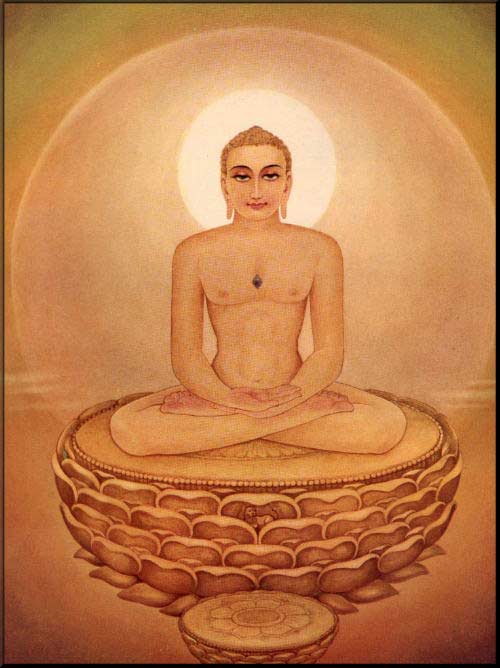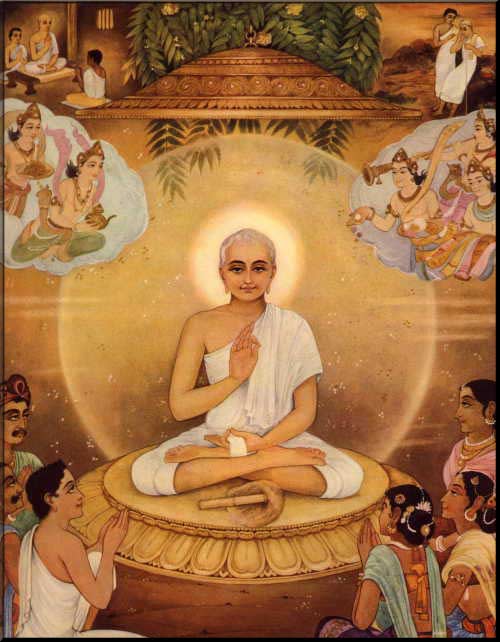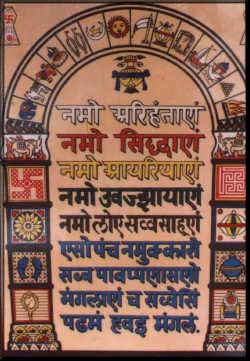The Jain Religion as Promulgated by the Jineshvara
The Jaina Dharma (religion) is the oldest religion in Indian culture. The religion liberates the soul by freeing it from the shackles of all action (Karma.) It is known as Jain religion because it is related to Jina. One who has conquered the five senses and the mind absolutely is called Jina. He who has voluntarily subdued and absolutely too, both attachment and hatred is known as ‘Jina’, He voluntarily suffered terrible pains, looked upon both friends and foes alike, with equanimity. By annihilating karma, the inner enemines, he has attained to absolute supra-sensuous knowledge. The great personage, who has attained omniscience, is called a Tirthankara; he is also known as a Jina. The Jina is also known as vitaraga. Arihanta, Sarvajna, Prathama-paramesthi, and so on. The Tirthankaras are 24 in number.
The following are the names of the 24 Tirthankaras, who constitute the last group of such 24.
The above-mentioned Tirthakaras are adjudged to be the reformers of the Jaina religion. This is because an infinite number of Tirthankaras had preceded them and they had carved out and lighted the path for the welfare of the world by promulgating and reinstating again and again this blessed religion. Sramana Bhagvan Mahavir was the last Tirthankara of this last group of 24. It was he who promulgated the Jaina religion as it is practised at present.
The 24th Tirthankara - Bhagvan Mahavir
The Jina religion recognizes Arihantadeva as a Tirthankara. Bhagvan Mahavir was the 24th Tirthankara. He was the son of King Siddhartha of Ksatriyakunda and Queen Trisala. His name was Vardhmana. He was born on the 13th day of the bright half of the month Chaitra, i.e., on Monday, the 27th March, 559 B.C. He was initiated as a Jain monk on the 10th day of the dark half of the month Kartaka, i.e., Monday, the 29th December, 529 B.C. He attained Kevalajnana (absolute knowledge) on the 10th day of the bright half of the month Vaisakha, i.e., Sunday, the 23rd April, 517 B.C., at Pavapuri (Bihar).
The code of conduct and the philosophical doctrines laid dawn by him, after attaining absoulte knowledge become a Religion. As it was promulgated by the Jina, it come to be known as the Jina religion.
Fourfold Sangha
The omniscient Arihanta Bhagvan founded the Jina religion and established the fourfold order for proper management of religious institutions. The monks, the nuns, the Sravakas and the Sravikas-these four consititute the fourfold Sangha. The Sangha is just like a tirtha (holy place). The great man who established the Sangha, the tirtha, is therefore known as a Tirthankara.
Eleven Ganadharas
The first prime disciples initiated by Bhagvan Mahavir after attaining Kevalajinana, are known as Ganadharas. As they headed groups (ganas) of disciples, they are known as Ganadharas. They are :
- Shri Gautamswami
- Shri Agnibhuti Ganadhara
- Shri Vayubhuti Ganadhara
- Shri Vyakta Ganadhara
- Shri Sudharmaswami
- Shri Mandita Ganadhara
- Shri Mauryagupta Ganadhara
- Shri Akampita Ganadhara
- Shri Achalbhrata Ganadhara
- Shri Metarya Ganadhara
- Shri Prabhas Ganadhara
The Navkara Mantra
The great Mantra for meditation by the followers of the Jain dharma is this-
Namo Arihantanam
Namo Siddhanam
Namo Ayariyanam
Namo Uvajzhayanam
Namo Loe Savvasahunam
Eso Panca namokkaro
Savvapavappanasano
Mangalanam ca savvesim
Padhamam havai mangalam.
Every Jain chants, mutters and repeats this great mantra every day and bows down before the Punchaparamesthi. This mantra repeated with full concentration of mind yields many benefits to the aspirants.
Four Saranas (Places of Surrender)
The four Saranas are so called because human beings surrender themselves absoulutely to all the four for liberation of their souls. This leads to purity of the soul and also peace of mind. Mental peace accrues to one who accepts them with unstinted faith. Annihilation of karma also follows.
Four Mangalas
- Arihanta Mangalam (Arihantas are auspicious)
- Siddhmangalam (Siddhas are auspicious)
- Sahumangalam (Sadhus are auspicious)
- Kevalipannatto dhammo mangalam (the religion promulgatedby the Kevali is auspicious)
The Four Loguttamas (Suppremes in the world)
- Arihanta Loguttama (The Arihantas are supreme in the world.)
- Siddhha Loguttama (The Siddhas are supreme in the world.)
- Sahu Loguttama. (The Sadhus are supreme in the world.)
- Kevalipannatto dhammo loguttamo. (The religion promulgated by Kevali is supreme in the world.)
Following all this, man surrenders himself to the four with this prayer :
- Arihante Saranam Pavajjami (I seek shelter of Arihantas.)
- Siddhanam Saranam Pavajjami (I seek shelter of Siddhas.)
- Sahu Saranam Pavajjami (I seek shelter of Sadhus.)
- Kevali pannattam dhammam (I seek shelter of the religion premulgated by Kvali.)


